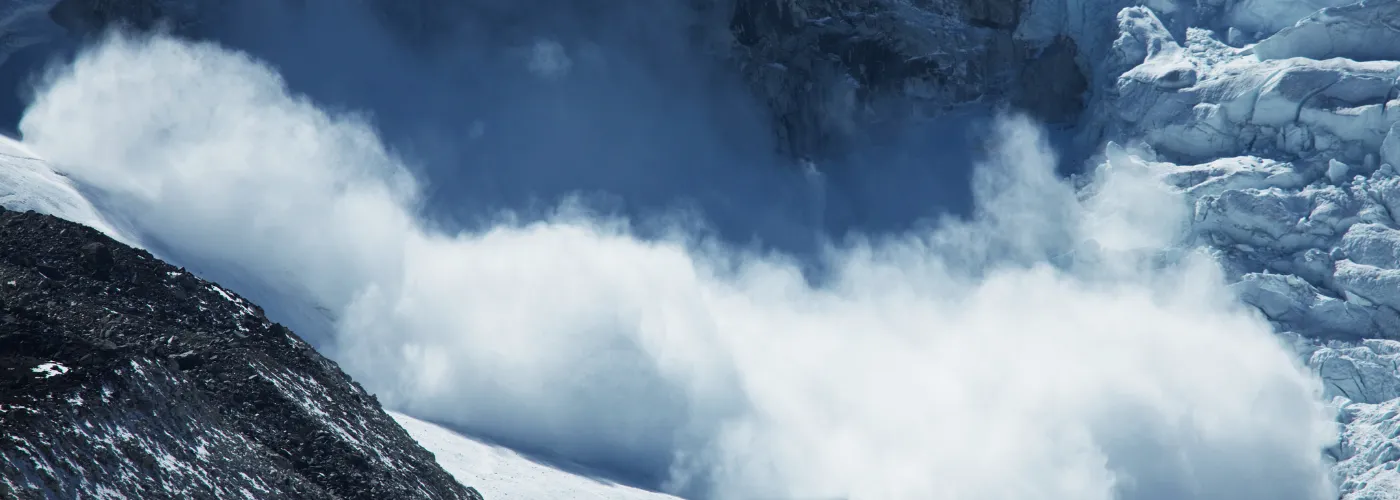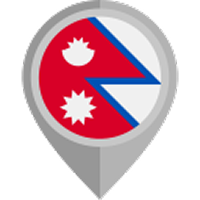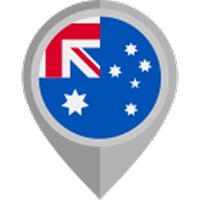Nepal vision | 16/10/2023
In your Christmas holiday, you want to spend most of the time near nature. The holiday season is the perfect time for trekking in Nepal with less people on the trail and more chilly environment in the mountain. However, there is a lot of preparation you have to do before your ideal trek.
Nepal's trekking trails attract adventure enthusiasts and nature lovers alike, from the towering Himalayas to picturesque villages. Choosing to trek in Nepal during Christmas adds a unique and magical touch to your adventure. It's a blend of nature's beauty and festive cheer.
While many may be cozying up by the fireplace, you'll embrace the outdoors in a winter wonderland, experiencing the season's joy amidst awe-inspiring scenery that provides you with a memory of a lifetime. The best thing is Nepal is really famous for its hospitality making it a wonderful destination for the whole family during the holiday season.

How to prepare for trekking in Nepal at Christmas?
Nepal offers adventurers and nature enthusiasts a unique and unforgettable experience during the Christmas holiday. Picture yourself surrounded by snow-capped peaks, quaint villages, and the crisp winter air as you embark on this extraordinary trekking adventure. Let's break down your plans for the preparation for trekking.
Research and Planning
Picking the Perfect Trekking Route
Choosing the correct trekking route is like selecting the ideal adventure for your journey. You should consider how challenging you want it to be and what the weather will be like during Christmas. Some trails might be more accessible for beginners, while others offer a more rugged experience like the Annapurna circuit, Everest base camp.
Figuring Out How Long Your Trek Will Be
Think about how many days you want to spend trekking. It's like deciding how much time you want to spend exploring the beautiful landscapes and experiencing the culture. Whether it's a week or more, plan accordingly!
Permits and Permissions
Getting the necessary permits is similar to ensuring you have all the right tickets for a concert. It's a must-do! Ensure you have the required paperwork to trek in Nepal. You would want to take advantage of all of the journey due to paperwork issues.
Finding a Good Place to Rest
Imagine planning a road trip and making sure you have places to stay along the way. The same goes for trekking - research and book your accommodations in advance. It's all about finding a cozy spot to rest after a day of exciting trekking.
Researching and planning might seem like a lot of work, but it's like plotting out a thrilling adventure. The more you plan, the more you can immerse yourself in the beauty of Nepal during Christmas.

Fitness and Health Preparations
You can make the most of your trek in Nepal during Christmas. It's good to be in decent shape. Aim for regular walks, hikes, or cardio exercises to build endurance and strength.
Include leg workouts like squats and lunges to strengthen your lower body. Also, add core exercises such as planks and crunches for stability. Remember to mix in aerobic exercises like running or cycling.
Before heading to Nepal, a health check-up is a smart move. Consult your healthcare provider for required vaccinations and health advice tailored to your needs.
Always carry a simple first aid kit with essentials like adhesive bandages, antiseptic wipes, pain relievers, blister pads, and any personal medications you might need.
Gear and Equipment
Dressing Right
Pack layers of clothing to adjust to changing temperatures. Include moisture-wicking inner layers, insulating mid-layers, and a waterproof outer shell. Also, sturdy, comfortable footwear is a must.
Backpack and Poles
A comfortable backpack with good support is crucial for carrying your essentials. Trekking poles provide balance and reduce stress on your knees, especially during descents.
Sleeping and Shelter
A quality sleeping bag suitable for cold weather is essential. Depending on your trek, you might need a tent or stay in tea houses along the route.
Other Essential Gear
Equip yourself with a headlamp (with extra batteries), sunglasses, sunscreen, and a hat to protect yourself from the sun's intense rays at higher altitudes.
Weather and Climate Awareness
Expect chilly temperatures during Christmas in Nepal, especially at higher altitudes. Days can be pleasant, but nights can get freezing, so be prepared for a mix of weather conditions.
Layer up! Bring thermal undergarments, fleece jackets, down jackets, and waterproof outer layers. Remember gloves, warm hats, and scarves to keep you toasty during the cold days and nights.

Cultural and Environmental Considerations
When trekking in Nepal, respecting the local customs and traditions is crucial. Likewise, it includes showing reverence at religious sites. It's for asking for permission before taking photos of people or their homes and dressing modestly to align with local norms.
Being mindful of cultural nuances helps foster respect and understanding between travelers and the local communities you encounter.
Responsible trekking involves minimizing your environmental footprint. Stay on designated trails, avoid single-use plastics, and carry out your waste.
Respect the delicate ecosystem by not disturbing wildlife or picking plants. Choose tea houses that follow eco-friendly practices, and opt for reusable and sustainable products to reduce waste.

Food and Water
Planning Meals and Snacks
Plan your meals and snacks carefully to maintain energy levels during the trek. Include a mix of carbohydrates, protein, and fats. Local dishes can be a delightful addition to your experience, so try them.
Understanding Dietary Preferences and Restrictions
Be considerate of dietary preferences and restrictions, communicating them clearly to tea houses or guides. Nepalese cuisine offers diverse options, including vegetarian and vegan dishes. Ensuring your nutritional needs are understood helps in a more enjoyable and comfortable trek.
Water Purification and Hydration Strategies
Safe drinking water is essential. Carry a reliable water purification system, like filters or purification tablets, to treat water from local sources. Hydration is key in the high-altitude trek, so drink plenty of water throughout the day to prevent dehydration.
Safety and Emergency Preparedness
Emergency Contacts and Communication Plan
Have a list of emergency contacts, including local authorities, your embassy, and trekking agencies. Establish a communication plan with your trekking group and ensure everyone knows how to reach each other in case of separation.
Creating an Itinerary and Sharing It
Craft a detailed itinerary and share it with a trusted individual. Nepal Vision Treks are here to ensure someone knows your whereabouts and can assist in emergencies. Regular check-ins with this contact are a good practice.
Knowing Emergency Evacuation Procedures
Familiarize yourself with emergency evacuation procedures specific to the area you're trekking. Understand the nearest medical facilities and evacuation routes, preparing for unforeseen medical emergencies.
Understanding Altitude Sickness and Prevention
Educate yourself about altitude sickness and its symptoms. Ascend gradually, allowing your body to acclimate. Stay well-hydrated, eat light, nutritious meals, and listen to your guide's advice regarding altitude sickness prevention and management.

Budget and Expenses
Estimating the Overall Cost
Estimate the total cost of your trek, considering permits, accommodation, food, transportation, and gear—research and plan for any additional expenses like souvenirs or unexpected costs.
Budgeting for Permits, Accommodation, Food, and Transportation
Allocate your budget wisely, considering the costs of permits, accommodation options, meals, and transportation. Prioritize essential expenses while allowing room for some flexibility and experiences.
To wrap up, Trekking in Nepal during Christmas offers a captivating blend of natural wonders and cultural richness. Your journey becomes a respectful and fulfilling adventure by embracing local customs, preserving the environment, and prioritizing safety and preparedness.
Plan thoughtfully with Nepal Vision Treks, immerse yourself in the experience, and cherish Nepal's breathtaking landscapes and warm hospitality.
Faqs
- Can I trek in Nepal during the monsoon season?
Certain regions are better for monsoon treks; consider Upper Mustang or Dolpo.
- Are trekking permits required for all trails in Nepal?
Yes, trekking permits are required for almost all trekking regions in Nepal.
- Can I trek independently, or is a guide mandatory?
It's possible to trek independently, but a guide is highly recommended for safety and cultural insight.
- How do I acclimate to high altitudes during the trek?
Gradual ascent, staying hydrated, and acclimatization days are vital strategies.
- Are vegetarian and vegan food options available on the treks?
Yes, trekking routes in Nepal offer a variety of vegetarian and vegan meal choices.
- What types of wildlife might I encounter during the trek?
Depending on the region, you might see yaks, various birds, and mountain goats.
- How do I handle waste disposal during the trek?
Carry out non-biodegradable waste and follow "leave no trace" principles for waste management.
- Is it possible to charge electronic devices during the trek?
Many tea houses and lodges offer charging facilities for a small fee.
- Are there age restrictions for trekking in Nepal?
There are no strict age limits, but trek difficulty should align with physical abilities.
- Considering the weather and crowds, what is the best time to trek in Nepal?
The best times are pre- and post-monsoon (October to November, March to May) for favorable weather and fewer crowds.









